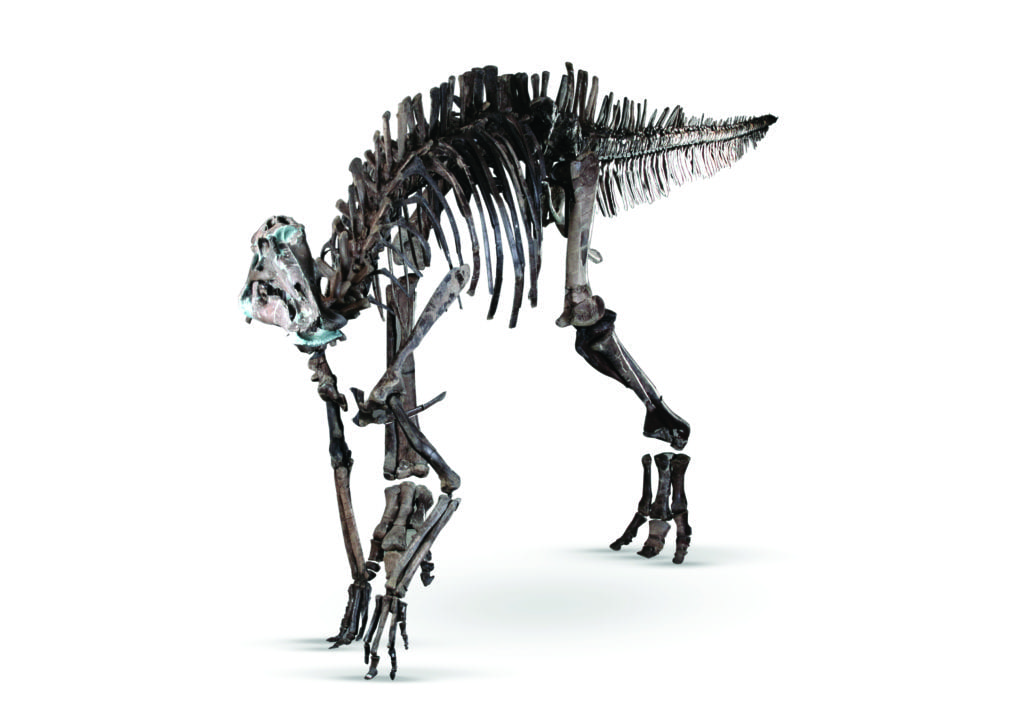Australian Bunyip Duck-Billed Dinosaur Fossil (September 5)


When Europeans first settled in Australia, they recorded Aboriginal stories of a creature called the bunyip. This huge creature lived in swamps and had a “blood-chilling cry.” In the 1800s, in Victoria, Australia, the bones of a bunyip were found. It was reported in the July 1845 edition of the Goolong Advertiser newspaper that an Aboriginal had identified this as a bunyip bone. He then drew a picture of the bunyip. This picture was taken to other Aborigines, who had no chance to communicate with the first one, and each identified the bone and picture as a bunyip. The newspaper reported a number of sightings of the bunyip; it looked like an alligator standing 12 feet tall. Its hind legs were thick and strong, with forelegs longer. It had long claws. It could swim. It walked on land with its hind legs and head erect. It was covered with multicolored scales and laid pale blue eggs double the size of an emu’s egg. Its snout was like a duck’s bill.
The description and newspaper sketch bear a strong resemblance to the duck-billed dinosaurs – 13 years before the first fossil duck-billed dinosaur bone was described. Dinosaurs and man did live together. Today, many dinosaurs have gone extinct. When we put on our biblical glasses, we would expect these types of widespread reports after the Flood as the dinosaurs left the ark and spread out and filled the Earth.
